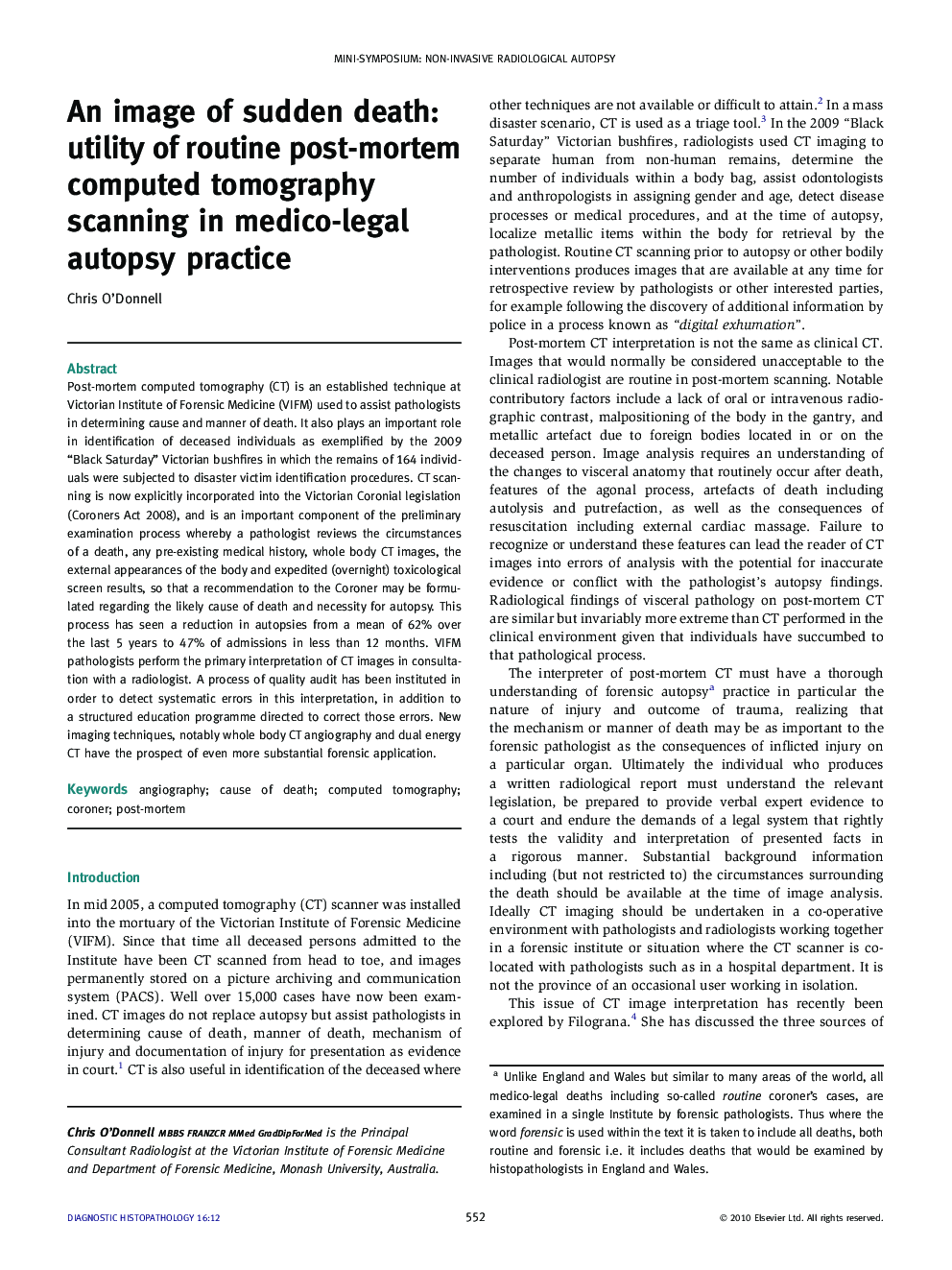| Article ID | Journal | Published Year | Pages | File Type |
|---|---|---|---|---|
| 4131325 | Diagnostic Histopathology | 2010 | 4 Pages |
Post-mortem computed tomography (CT) is an established technique at Victorian Institute of Forensic Medicine (VIFM) used to assist pathologists in determining cause and manner of death. It also plays an important role in identification of deceased individuals as exemplified by the 2009 “Black Saturday” Victorian bushfires in which the remains of 164 individuals were subjected to disaster victim identification procedures. CT scanning is now explicitly incorporated into the Victorian Coronial legislation (Coroners Act 2008), and is an important component of the preliminary examination process whereby a pathologist reviews the circumstances of a death, any pre-existing medical history, whole body CT images, the external appearances of the body and expedited (overnight) toxicological screen results, so that a recommendation to the Coroner may be formulated regarding the likely cause of death and necessity for autopsy. This process has seen a reduction in autopsies from a mean of 62% over the last 5 years to 47% of admissions in less than 12 months. VIFM pathologists perform the primary interpretation of CT images in consultation with a radiologist. A process of quality audit has been instituted in order to detect systematic errors in this interpretation, in addition to a structured education programme directed to correct those errors. New imaging techniques, notably whole body CT angiography and dual energy CT have the prospect of even more substantial forensic application.
